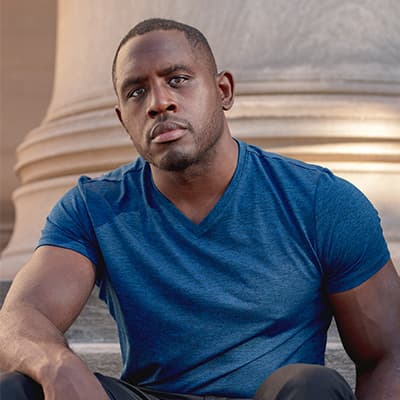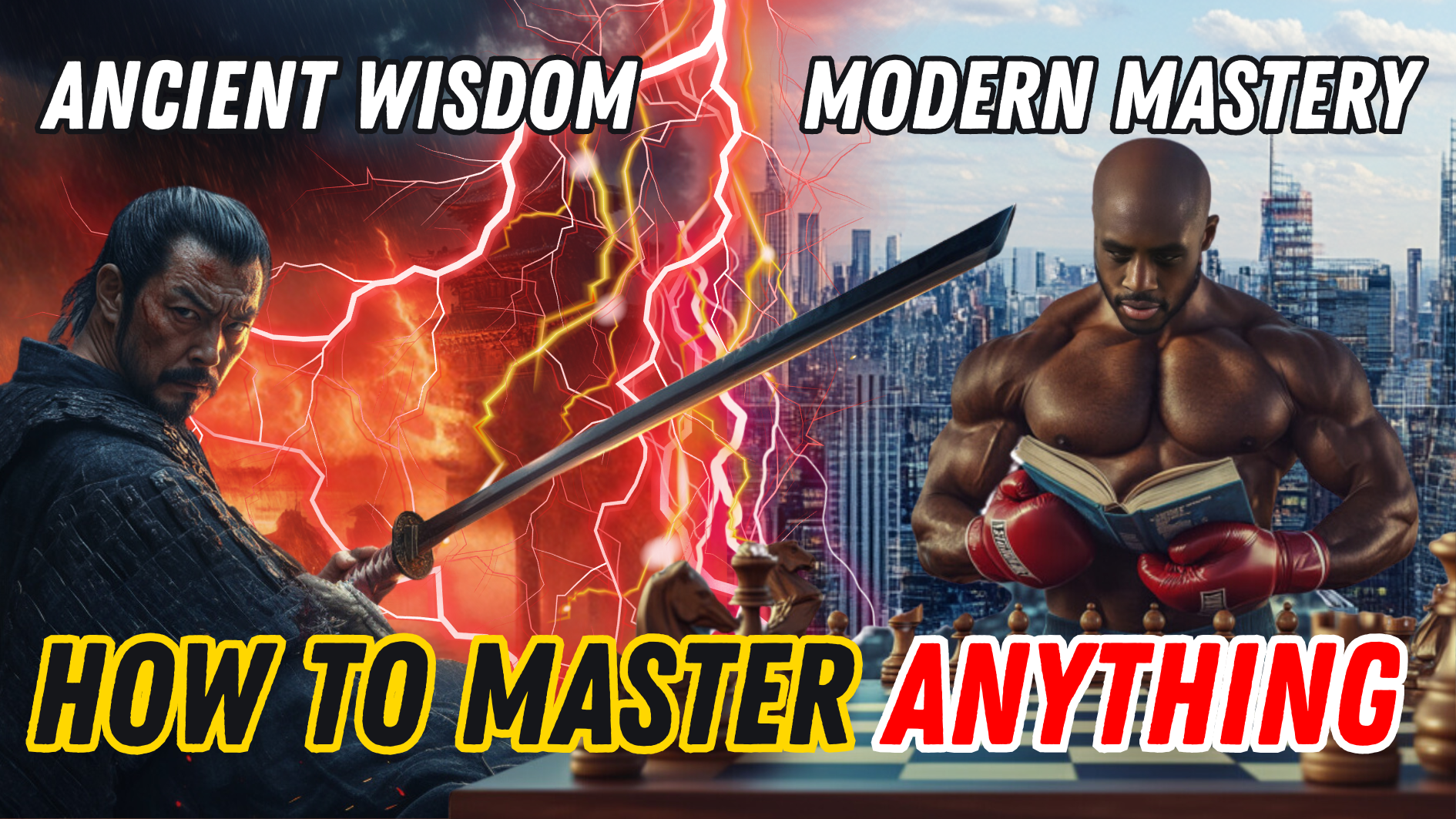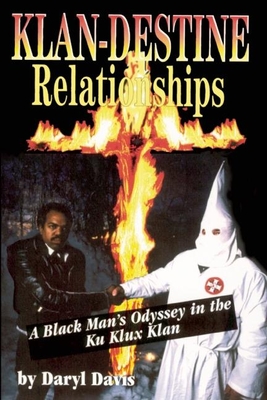The Cure For Hate recounts the story of Tony McAleer as he goes from being fully stepped into Neo-Nazi ideology to becoming a voice for peace and unity, and everything he learns along the way.
This memoir explored the life of Tony McAleer, tracing his journey from his initial introduction to the skinhead culture to becoming a full-on far-right white supremacist, to his eventual denouement of racist and hate-fueled ideology. The memoir then takes us on a journey of retribution, compassion, and forgiveness, not just towards him, but to the people he harmed.
Ultimately, McAleer becomes a powerful advocate of and partner with groups devoted to getting people out of extremist movements, most notably working with Life After Hate, a group dedicated to helping people leave far-right groups, particularly white supremacy groups.
The acceptance gained by being part of an extreme group
“I was no longer searching for an identity but a way of life.”
This is a subtle but critical distinction.
Identity is who you are; a way of life is how you live.
When the narrator describes moving from the fluid, creative world of punk to the rigid, rule-bound world of skinheads, he’s highlighting a psychological need for structure over expression.
At a young age — and especially after early rejection, instability, or neglect — structure can feel like salvation.
It simplifies life: no more confusion, no more feeling lost.
There’s a manual now.
Follow the rules, earn belonging.
The tragedy is that this is adaptive behavior aimed at survival — but it’s survival within a sick system.
He didn’t find a “healthier” structure like a sports team, a music program, or a mentor group.
He found structure in a violent, extremist subculture.
Because when you’re desperate enough, any scaffolding feels like safety.
“People may not have respected me, but they feared me, which at the time felt better than respect.”
This is a raw confession about trauma psychology.
When you’ve been ignored, belittled, or made invisible, fear can feel intoxicating.
Fear is immediate.
Fear forces people to pay attention.
And when you have no healthy model for love, admiration, or real respect, fear looks like the next best thing.
Better to be a villain people notice than a ghost they ignore.
The narrator also reveals how groups like this fill the deep human need for mattering.
When twenty people show up for you — even if they’re showing up in hate, violence, or rage — it still feels like connection.
It’s an inverted form of love: attention at any cost.
In adolescent psychology, especially when mixed with neglect or emotional abuse, negative attention is often better than no attention at all.
And again, violence creates theater: rival gangs, cops, sirens.
That public spectacle signals, in a twisted way, “You are important.”
“Friendships were formed and solidified over and over through violence and blood.”
This exposes one of the most disturbing (and human) parts of extremist groups:
They create brotherhood through shared suffering.
Scars, wounds, fights — they are all rituals of loyalty.
Not unlike soldiers bonding in war, these kids bonded through manufactured battle.
In fact, if you strip away the ideology — the racism, the anger — what remains is a very primal need:
to belong to a tribe that recognizes your pain and says, “You are one of us.”
But the tribe’s cohesion demands constant proof.
You have to bleed for it, fight for it, earn your keep in violence.
That code substitutes for any real moral framework.
It becomes morality itself: loyalty over rightness, strength over compassion.
And critically, their common enemy wasn’t just rival gangs.
It was also the larger society that rejected them in the first place.
“I didn’t lose my humanity. I traded it for acceptance and approval until there was nothing left.”
This is the most haunting quote — and one of the most important truths about radicalization, cults, and gangs.
People don’t “lose” their humanity overnight.
They erode it.
They bargain bits of it away, piece by piece, to buy acceptance.
It starts with small betrayals of your better self:
- Laugh at a cruel joke to fit in.
- Join a fight you know is wrong to prove your loyalty.
- Turn a blind eye to an atrocity because speaking out would exile you.
Each act buys a little more group approval — but costs you a little more of your soul.
And over time, if you don’t stop, you wake up hollowed out.
Not because someone stole your humanity, but because you willingly traded it for survival, for belonging, for a twisted kind of love.
This also subtly addresses shame.
Acknowledging that he traded humanity suggests personal accountability — he wasn’t just a victim of circumstances.
But it also shows how desperate and starved for connection he was:
If you’re dying of thirst, you’ll drink poison.
The problem with fighting extreme ideas by censorship and force
“That is the danger with censorship; it creates an enticing mystique around the banned material where there previously was none. When the KKK puts flyers on 100 cars or houses in a community, they do it with the knowledge that those flyers might not help to recruit anybody, but the media reporting it will. The white supremacist movement thrives on conflict and attention, and the media is obliged to report on it, which only helps its cause.”
This is a powerful exposure of what psychologists call the Streisand Effect — when attempts to hide, censor, or suppress information only make it more alluring and widespread.
By banning or censoring hate speech, we may unintentionally turn it into forbidden fruit, giving it a mystique it wouldn’t otherwise have.
The narrator points out that extremist groups like the KKK are highly aware of this dynamic.
Their goal isn’t necessarily mass recruitment through leaflets — it’s media amplification.
They seed controversy knowing the media’s outrage and coverage will spread their message far wider than they ever could alone.
The key insight here is about ecosystems of attention:
Extremism doesn’t just survive on hate — it feeds on visibility.
Conflict is oxygen. Outrage is fuel.
In this sense, the media — even when acting in good faith — becomes an unwilling partner in spreading the ideology they seek to condemn.
“As I see it, the conundrum in trying to stifle the expression or discussion of offensive topics or beliefs is that while they might go out of immediate sight, they don’t go away. I think it is better to have these negative social or political elements out in the open where we can deal with them head-on by exposing them.”
This quote reveals a deep, uncomfortable truth about social dynamics:
Suppressing bad ideas doesn’t eliminate them. It buries them.
And when buried, ideas can mutate, radicalize, and grow in darkness, unseen and unchallenged.
By contrast, if harmful ideas are out in the open, they can be debated, discredited, and dismantled publicly.
Sunlight is disinfectant.
Censorship often turns hate into a secret religion among the disaffected — while open confrontation exposes its flaws and contradictions.
The quote also hints at a strategic mindset:
It’s not enough to be morally right — you also have to be tactically smart.
Winning the fight against hate requires wisdom, not just moral outrage.
“Force in this context is alluring, as it offers an instant sense of gratification, but it is costly and ineffective in the long term. Vigilante justice is not going to power the change required to heal nations.”
This is a nuanced critique of vigilante justice and emotional reactivity.
When confronted with hate or fascism, the natural instinct is to meet force with force — especially because violence promises quick results.
But that quickness is an illusion.
True social change — the kind that reforms cultures and nations — is slow, painful, and rooted in building institutions, changing minds, and healing wounds.
Violence often creates martyrs for the very causes it tries to suppress.
It cements grievance. It does not uproot ideology.
Force satisfies the ego (“I did something!”) but often sabotages the goal (“I made it worse.”).
“Because that is the purpose of the leaflets. A couple hundred leaflets on the windshields of cars or on the doorsteps of homes isn’t likely to recruit anybody, but the media storm that follows absolutely will.”
This quote reveals something most people miss about extremist propaganda:
The real weapon isn’t the message itself — it’s the reaction it provokes.
When hate groups put out flyers, pamphlets, or cheap propaganda, they know full well that most people who see it will not be persuaded.
Their immediate goal isn’t mass conversion.
It’s provocation.
It’s attention bait.
They want outrage.
They want fear.
They want a headline:
“White Supremacist Flyers Found in Suburban Neighborhood — Community in Uproar.”
Because once the media picks it up, the platform expands.
Now, instead of a few hundred random people seeing their message, thousands — maybe millions — see it.
And importantly, some of those viewers will already be disaffected, alienated, or angry.
Those few who are already vulnerable now know where to find a tribe that welcomes their bitterness.
In this sense, the media storm becomes a recruiting tool that is far more powerful than the original act itself.
The initial flyer is just a matchstick.
The media outrage is gasoline.
It’s a cold, strategic move by extremist groups:
They manipulate the very systems designed to warn the public into unintentionally advertising for them.
Extremists aren’t trying to persuade the masses with leaflets.
They’re fishing for the few who already feel lost — and using public outrage as their signal flare.
The smarter we are about recognizing this strategy, the better we can deny them the attention they desperately crave.
“The argument often used to justify a violent response to fascism is Hitler and the force it took to remove him from power. It also cost 70 million lives. Violence often doesn’t work, as witnessed by the Spanish Civil War, which left 500,000 dead.”
This quote brings brutal historical clarity.
Yes, sometimes violence is necessary — as it was in WWII.
But invoking WWII as a general justification for violence against hate groups today is deeply flawed logic.
- WWII was an unimaginable bloodbath: 70 million deaths.
- The Spanish Civil War, also cited here, was a catastrophe that left deep scars on Spain, killing 500,000 people and entrenching a dictatorship for decades.
These examples show that even when violence is “successful,” the cost is catastrophic.
Victory through violence is pyrrhic: you win the battle, but lose the soul of your society.
The narrator is making a critical point:
The threshold for justifying violence must be extraordinarily high — not merely the presence of hate, but an existential threat to survival.
Until then, other methods — persuasion, exposure, education, resilience — are both more effective and more humane.
Introducing extreme ideas into mainstream discourse
“Here’s how it works: Let’s start with defining political extremism as a position that less than five percent of the population would support. Now take a position that only one percent of the population would support, put it in a nice wrapper, and deliver it with a silver tongue so that now more than five percent of people would support it. If you can do that, you change where that outer position of extremism lies. That one-percent position has now become the outer edge of normal. When we do this, we incrementally change the location of the middle. When people have no political power, often the only way to move the middle is by moving the extremes. By the same token, people with enormous political capital at their disposal can move the middle at whim, and that in turn moves what is considered the far end of normal to become even more extreme. That is the interplay between mainstream politics and the fringe: they feed off each other.”
This is a masterful description of the Overton Window — the range of ideas that the general public considers acceptable or “normal.”
The author explains it in simple, visceral terms:
- Find an idea so extreme that only 1% would accept it.
- Polish it: better messaging, better packaging, smoother delivery.
- Shift it just enough so that 5–10% will now nod along.
- Congratulations — you’ve just moved the cultural center of gravity.
Why is this so powerful?
Because the “center” — what’s considered reasonable, normal, or middle-of-the-road — is not fixed.
It moves.
And once you shift the center, everything else moves with it:
- Yesterday’s fringe becomes today’s debate topic.
- Yesterday’s moderate becomes today’s “radical centrist.”
- Yesterday’s unacceptable idea is now “worth discussing.”
And crucially, if you can shift the extreme, you automatically shift the middle.
The fringe and the mainstream are not separate forces — they are in constant negotiation with each other.
This is true across political spectrums — right, left, authoritarian, anarchist.
It’s how social change happens, for better or worse.
It’s how both progress and disaster unfold.
“Mainstreaming is a tactic of disguising extreme ideology in the camouflage of normality, which applies as much to language and message as it does to appearance and style.”
This quote adds another layer:
The battle is fought not only in ideas but in aesthetics.
Radicals know that to move the Overton Window, they must first look normal:
- Speak in calm, reasonable tones.
- Dress like your neighbors.
- Co-opt language that feels safe, familiar, and harmless.
- Hide the sharp edges under a smile.
This is why modern extremism often doesn’t look like the caricatures of old.
It doesn’t always wear swastikas or wave overtly violent slogans.
It uses suits, memes, coded language, “patriotism,” “freedom,” “traditional values,” or “protecting the children” as fronts — depending on the movement.
The mainstreaming of extremism is essentially branding.
Repackaging radical ideology in a way that seems palatable — even attractive — to people who would otherwise reject it outright.
The big danger:
By the time the true goals are obvious, the movement already feels too “normal” to stop without massive social resistance.
“In the moment, all terrorist groups see themselves as involved in a heroic struggle where any means necessary is justified to remove the perceived oppressor. Everything becomes romanticized by the propaganda.”
This quote dives into the self-perception that fuels extremism and terrorism.
No terrorist wakes up thinking, “I’m the villain.”
They see themselves as soldiers in a righteous war.
Their atrocities are justified because they’re framed as:
- “Fighting for freedom.”
- “Defending the oppressed.”
- “Striking back against tyranny.”
Propaganda romanticizes the violence.
It turns mass murder into heroism.
It turns suffering into sacred duty.
It sanitizes horror into mythology.
And that romanticism is essential because violence — especially large-scale, unjustified violence — would otherwise disgust normal people.
You must have a narrative that elevates the action into something “necessary” and “noble” to recruit followers.
Thus, extremism feeds itself through a loop of grievance → romanticism → violence → more grievance.
And if society fails to disrupt that loop early — often by addressing the legitimate grievances — the cycle can escalate beyond control.
On compassion and connection with other people
“If we have compassion for others and not ourselves, then it is not compassion but about ego, about being seen to be compassionate. And if we have compassion for ourselves and no one else, then it is not compassion but narcissism. Compassion within and compassion without—the two in balance—is a truly powerful combination, a place from which our fear and judgment can transform into understanding and healing. That which we don’t transform, we transmit.”
“I truly believe that the extent to which we dehumanize others is a mirror of how disconnected and dehumanized we are inside.”
“It’s as if the way we treat ourselves is written on a sign we wear around our neck that then instructs others how to treat us. If we don’t like the way we are being treated, we can change that sign by changing how we treat ourselves and connecting to our inner essence.”
The role of the ego
“The conundrum for anyone who is deeply dedicated to an extremist ideology is that identity and ideology become intertwined. For that reason, facts and logic are mostly ineffective at changing a person’s mind. If you attack the ideology, you’re also attacking the identity, and all of the ego’s defence mechanisms—whether that means lashing out or shutting down—will spring forth to meet the challenge. To change someone’s extremist beliefs, ideology and identity must be separated, and the mechanism for that change is not through the head but through the heart.”
“The ego’s role is to maintain and protect the integrity of that structure. The ego cares not about the accuracy or validity of the underlying beliefs but rather maintaining the structure. To the ego, that Jenga-like structure is everything, and it will stop at nothing, including harmful and even fatal thoughts and actions, to preserve it.”
“White supremacist ideology became so intertwined with my identity that there was nothing anyone could have said to me to talk me out of my position. There was nothing anyone could have said or done to me to dissuade me from my course of action because it wasn’t just what I believed; it was at the heart of who I was, and all of my ego was invested in preserving that.”
On harm and healing
“Whether we like it, accept it, or even believe it, when we harm others, when we harm the collective, we also harm ourselves. When we are a perpetrator and victimize others, as I did, we also hurt ourselves in the process. We dehumanize ourselves as we dehumanize others.”
“The simple truth is that if we don’t heal our pain, we are our pain. And when we are our pain, it affects others—and not in a good way. As within, so without. As above, so below. The macrocosm mirrors the microcosm, and I can look out to the world to uncover buried truths deep within me. Healing the self is a social responsibility, and compassion and healing others is a great way to do that.”
“When we harm one, we harm the whole. When we can heal the whole, we heal the one.”
The role of shame in hatred for others and hatred of self
“Hatred rests on a foundation of toxic shame and unresolved anger.”
“Healthy shame is that transitory feeling when we do something wrong, when we’re embarrassed and our cheeks flush; it acts as our moral compass, letting us know when we are operating outside of our personal value system. Toxic shame is not transitory; it is there 24-7, forming part of the subconscious belief system that creates our identity and telling us that we are worthless, not good enough, less than human. Toxic shame is an impaired sense of self that compels us to live our lives.”
“Toxic shame takes two forms: one is the shame we develop through our individual experiences and the intergenerational transfer of shame in our families (toxic shame cascades intergenerationally until it is healed); the other is collective shame, when we are made to feel shame for who we are and not for what we’ve done.”




